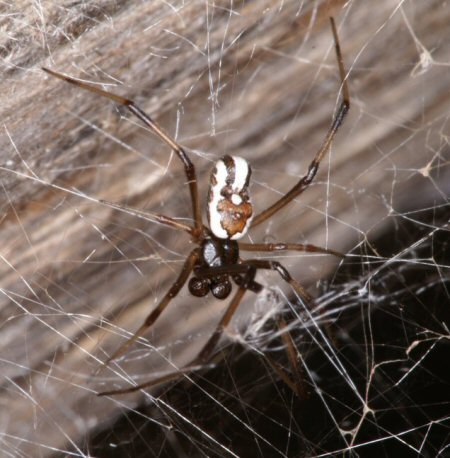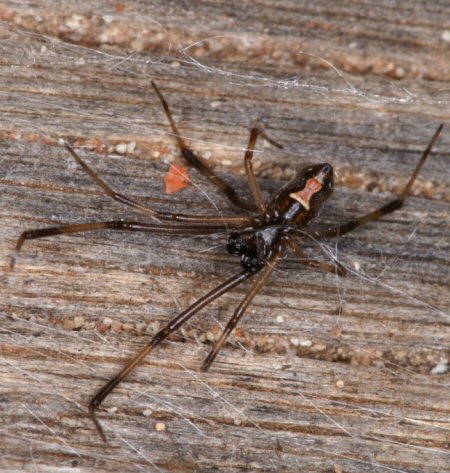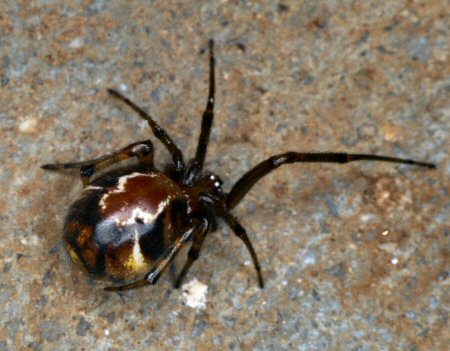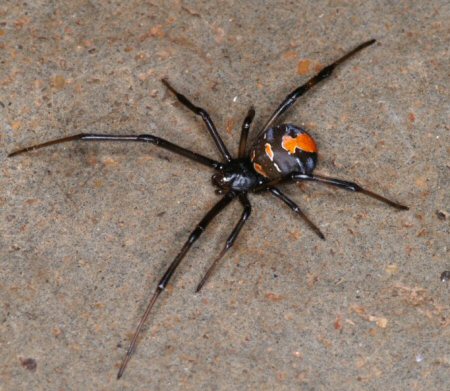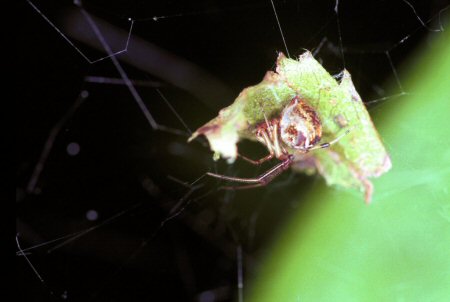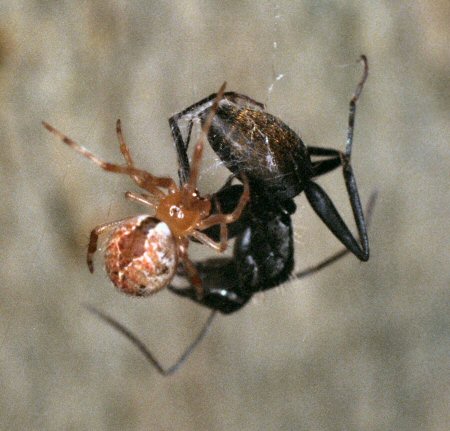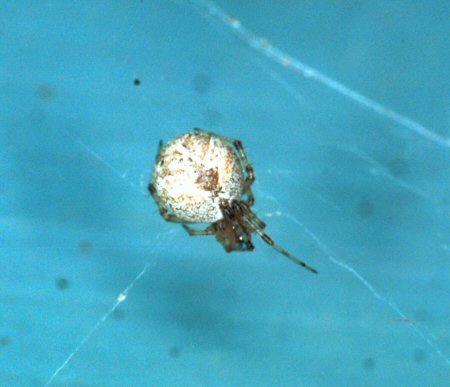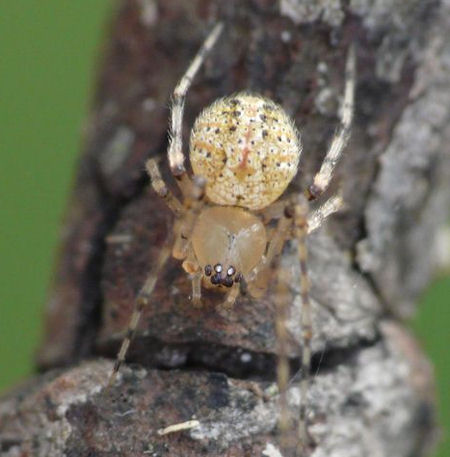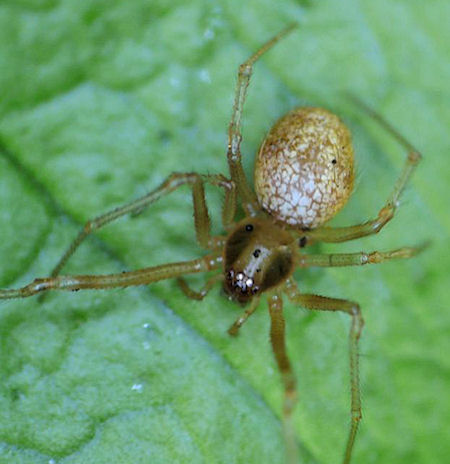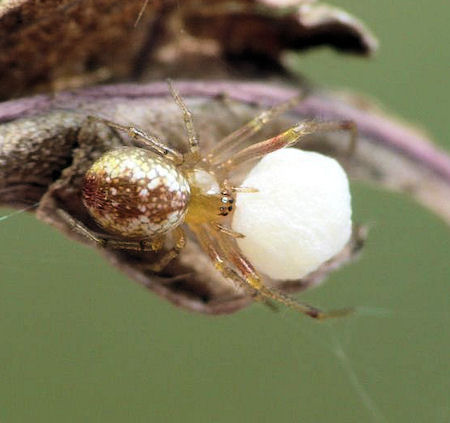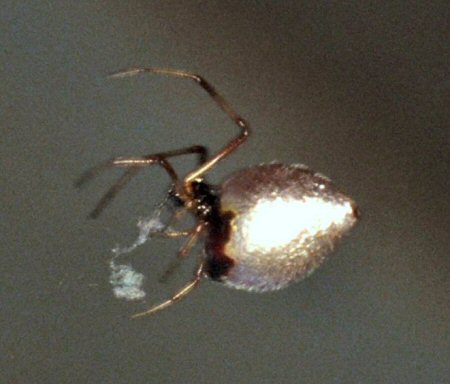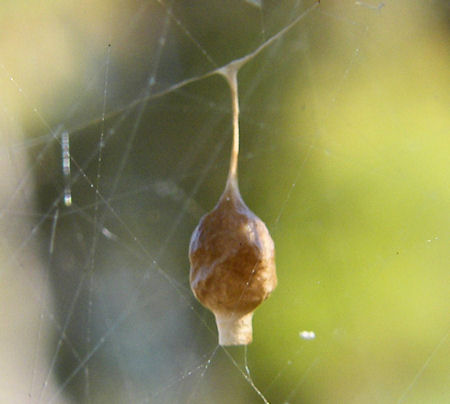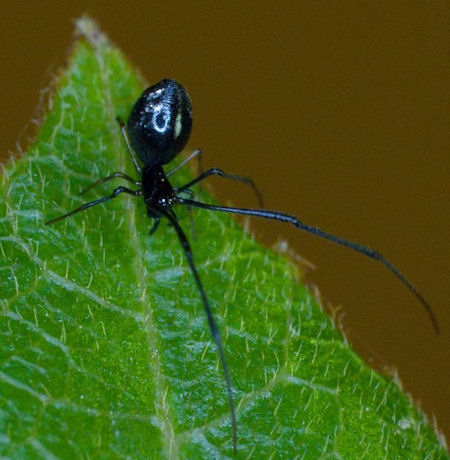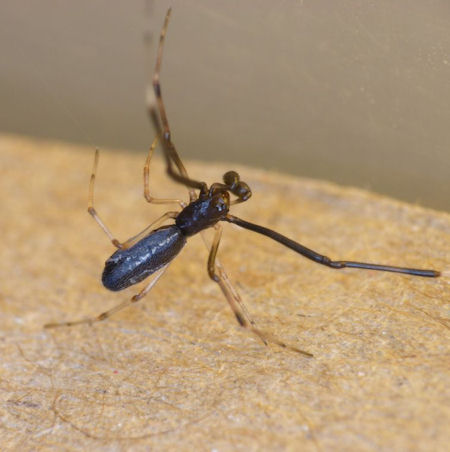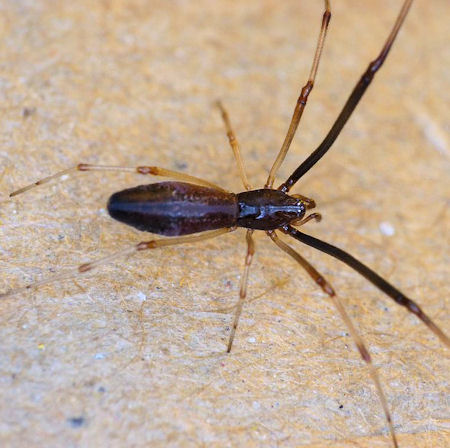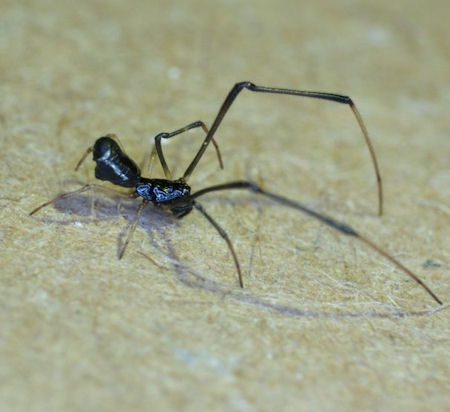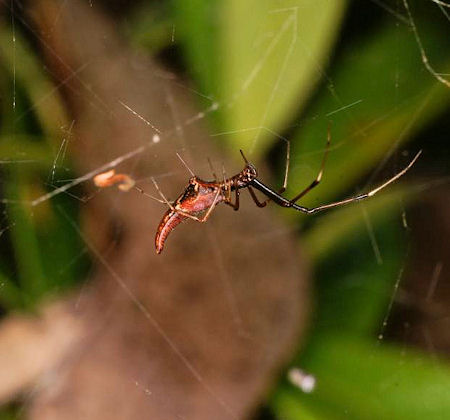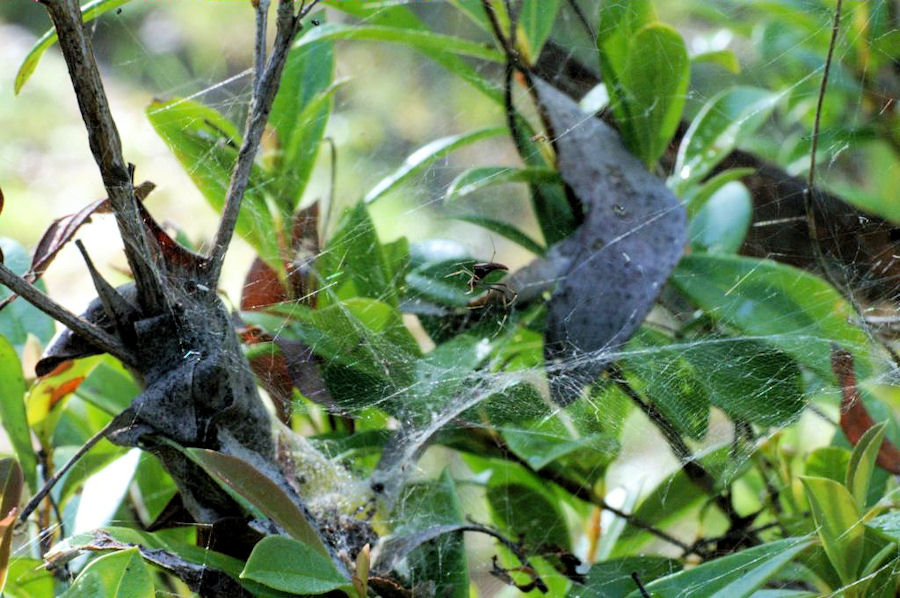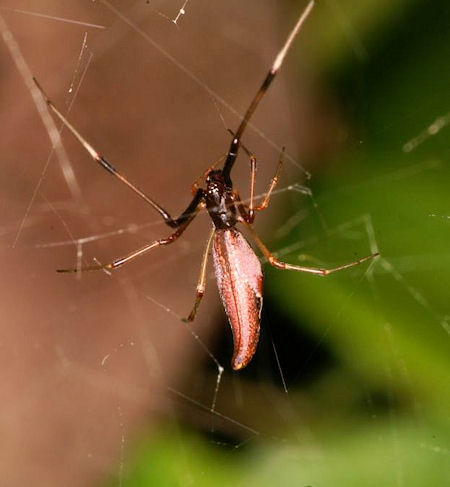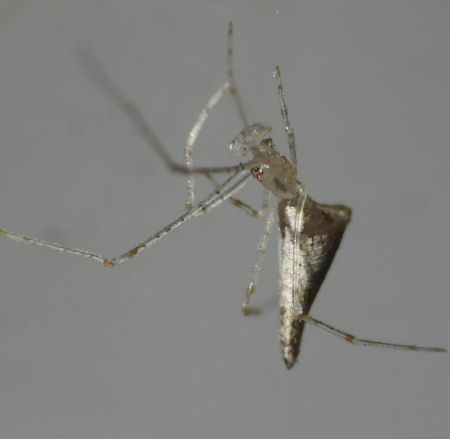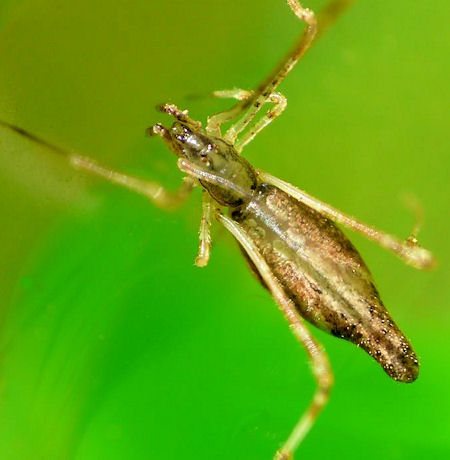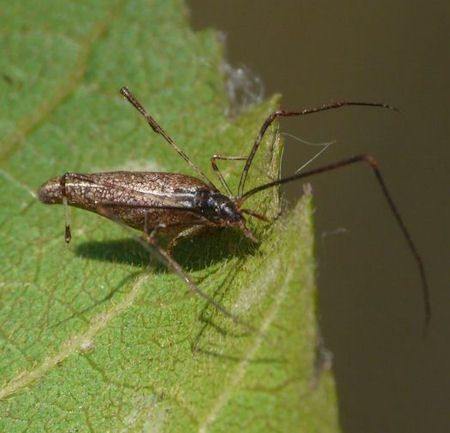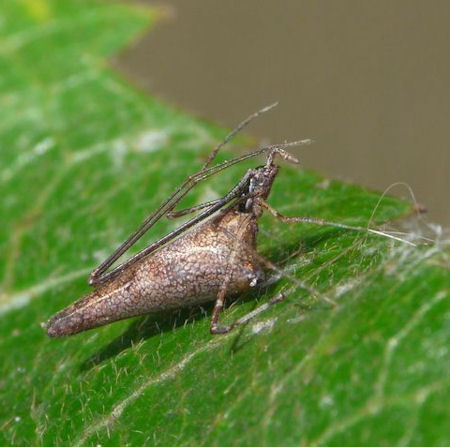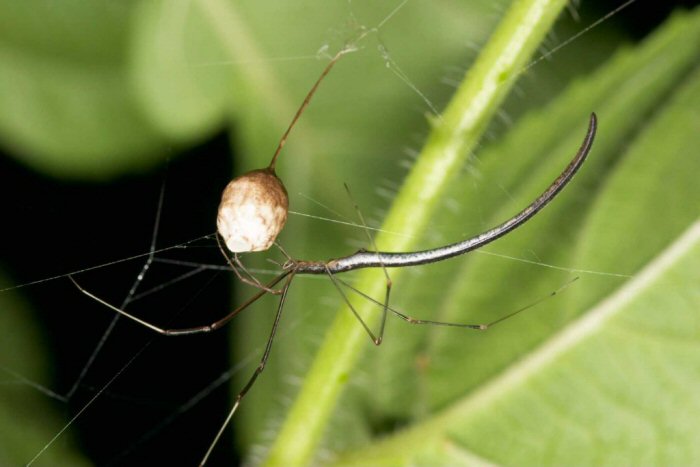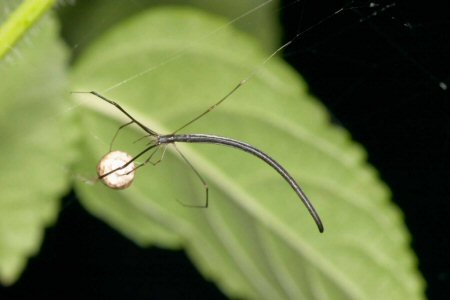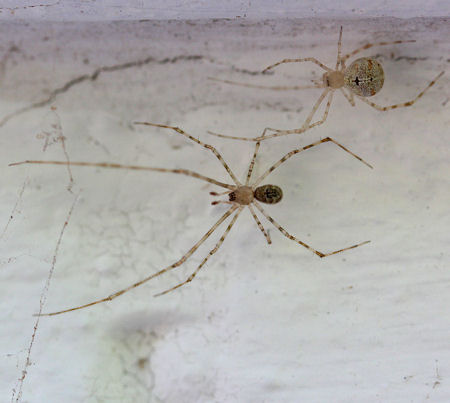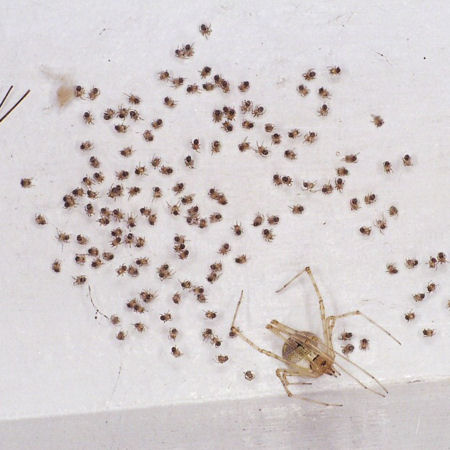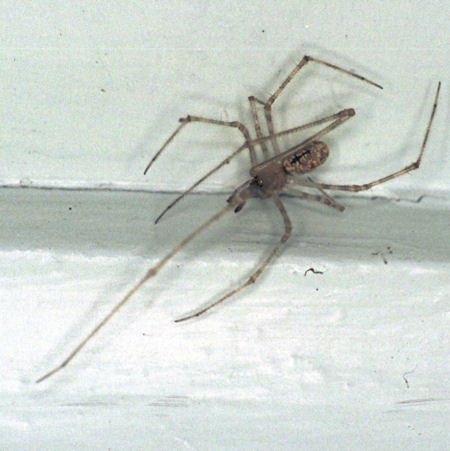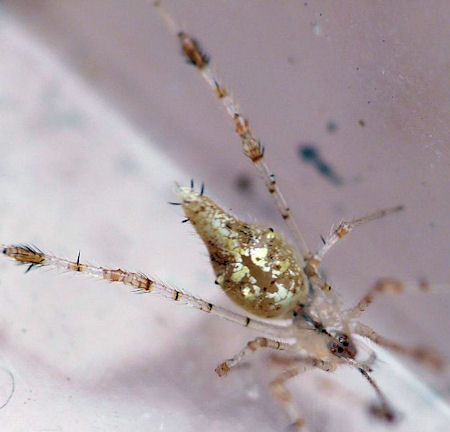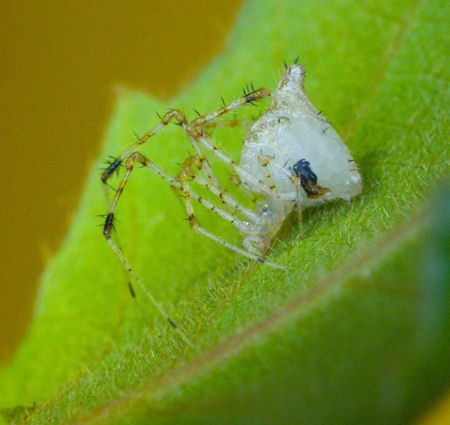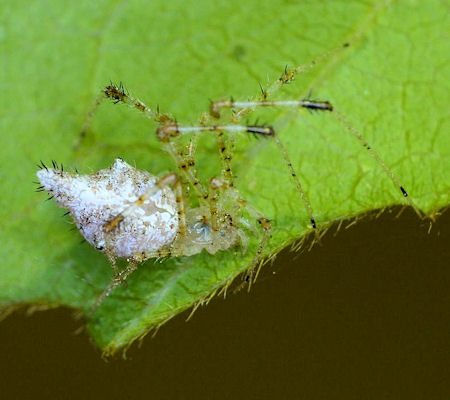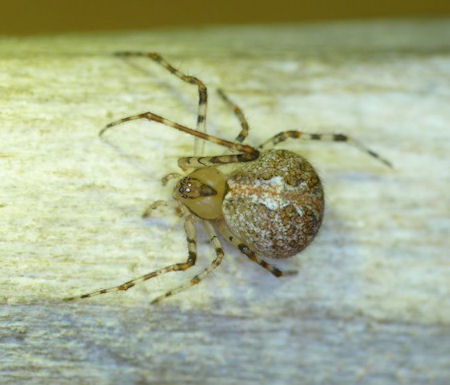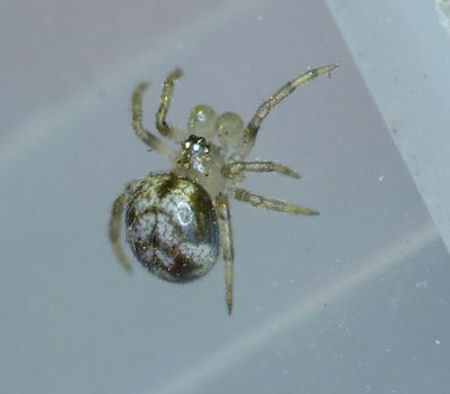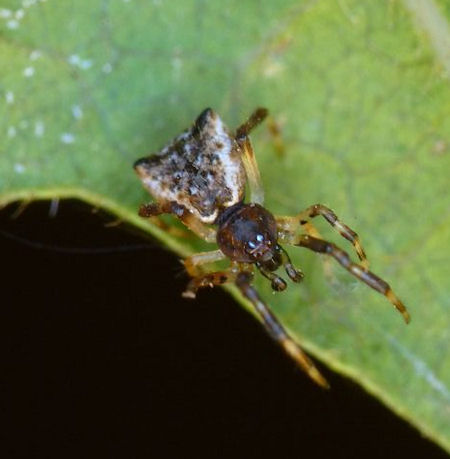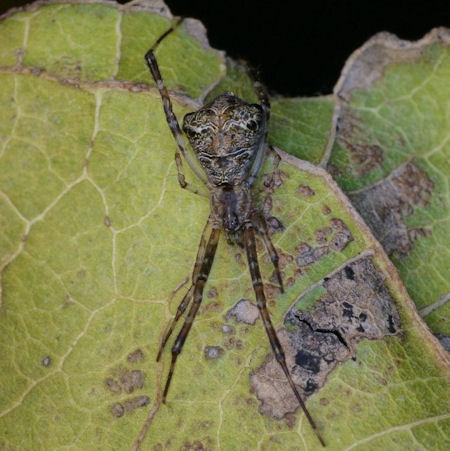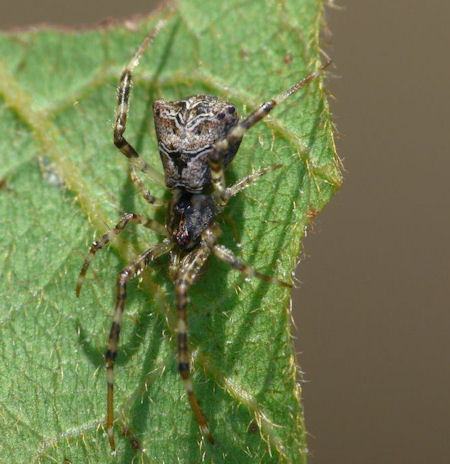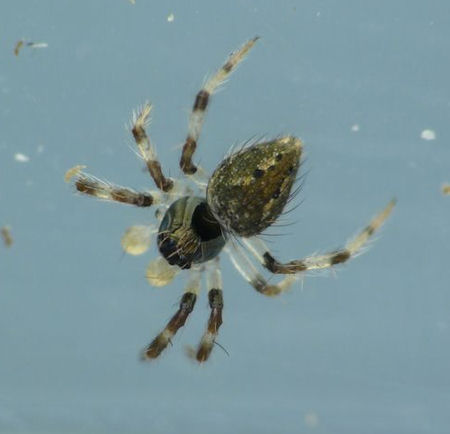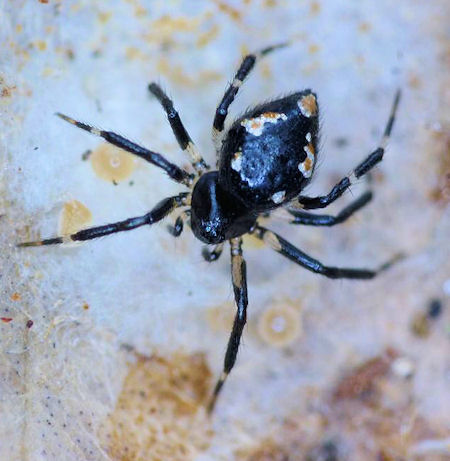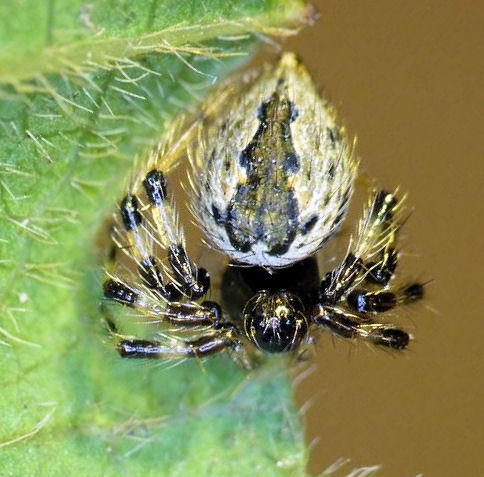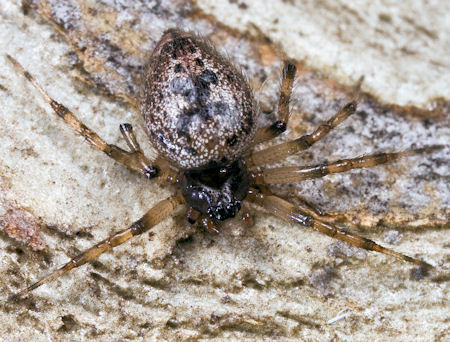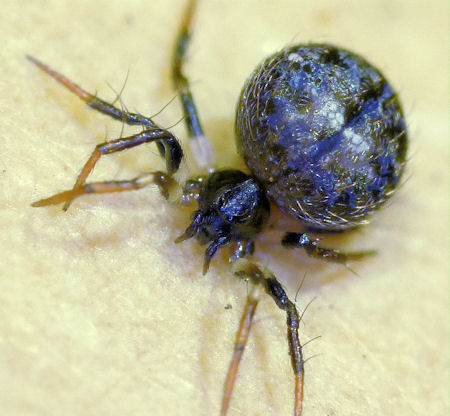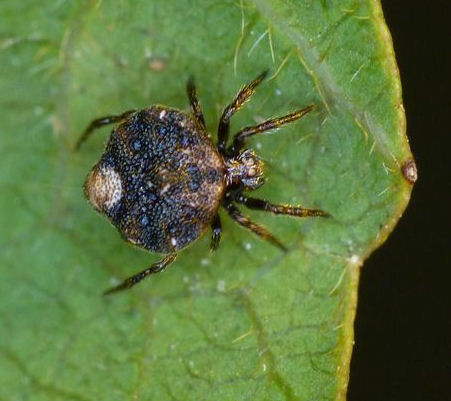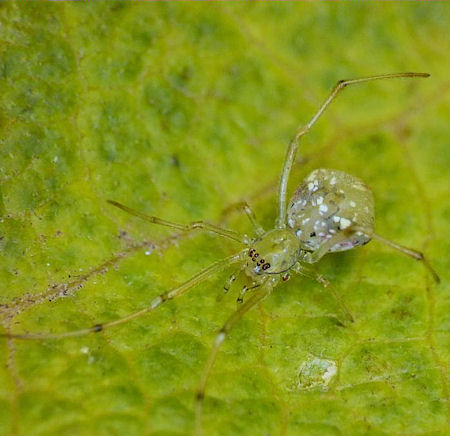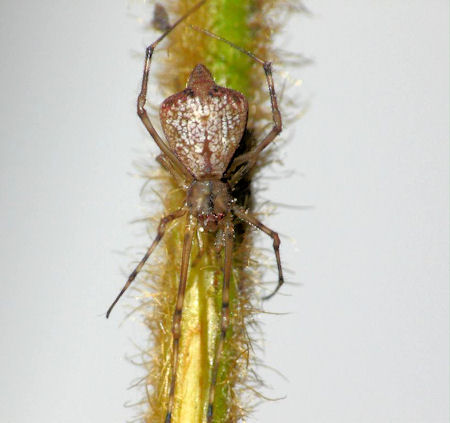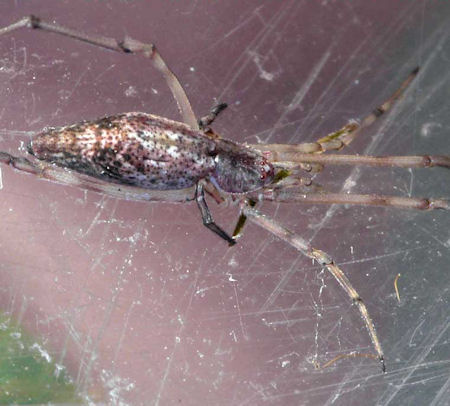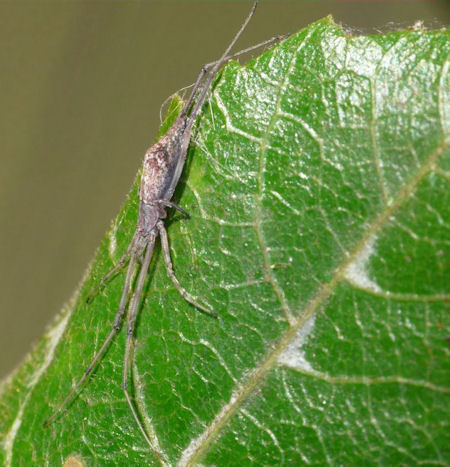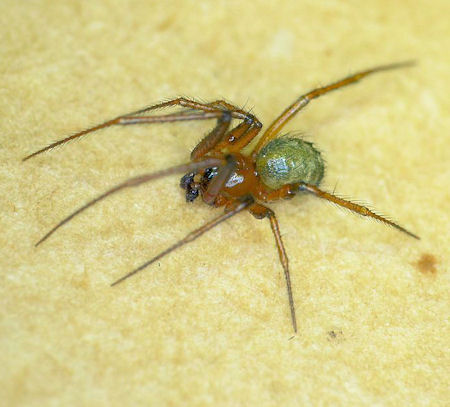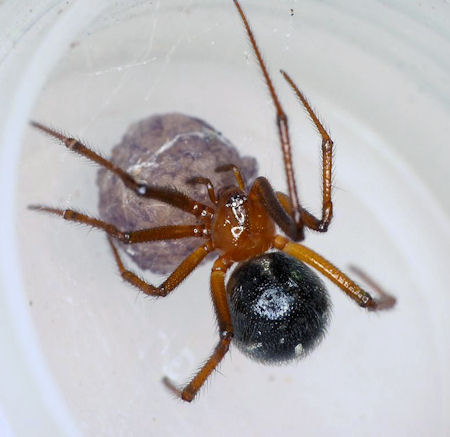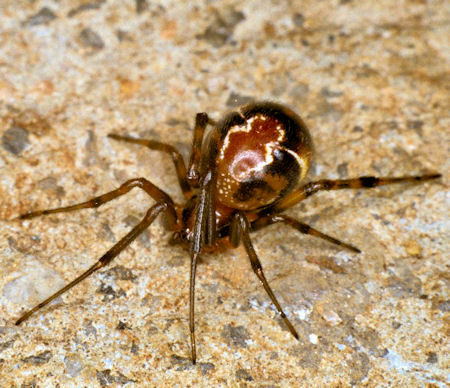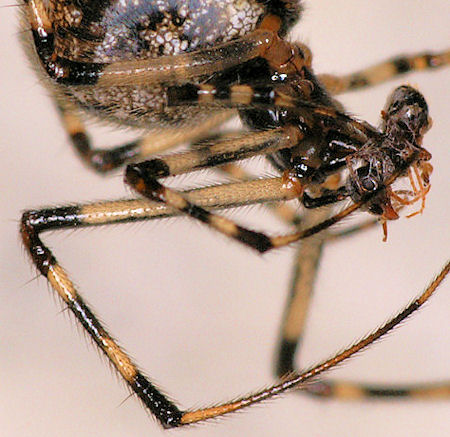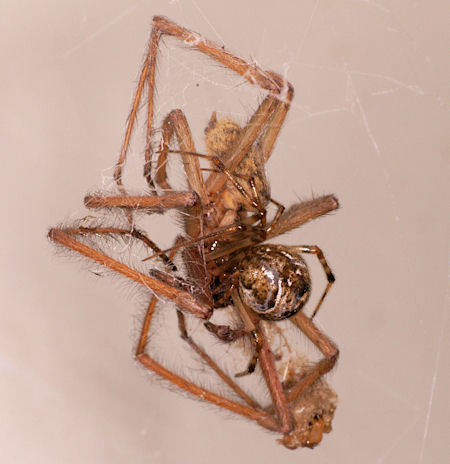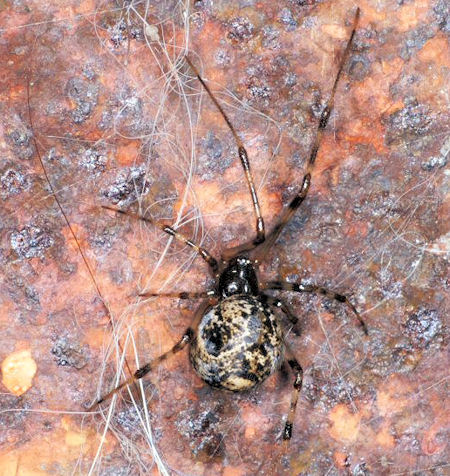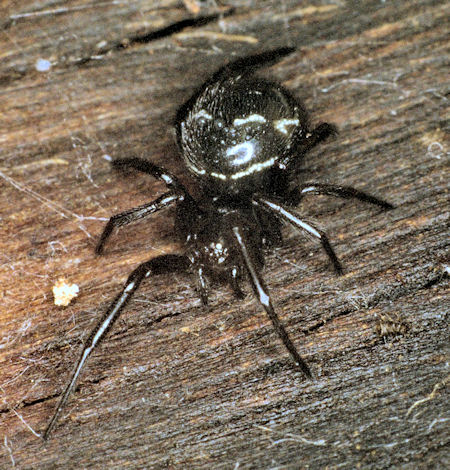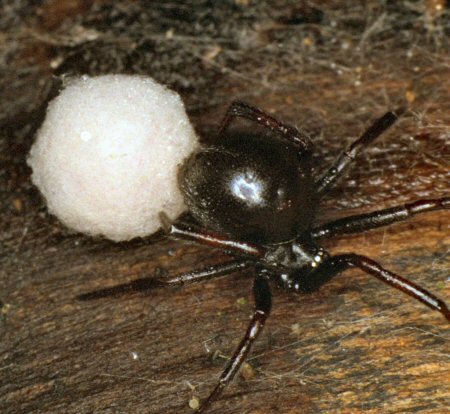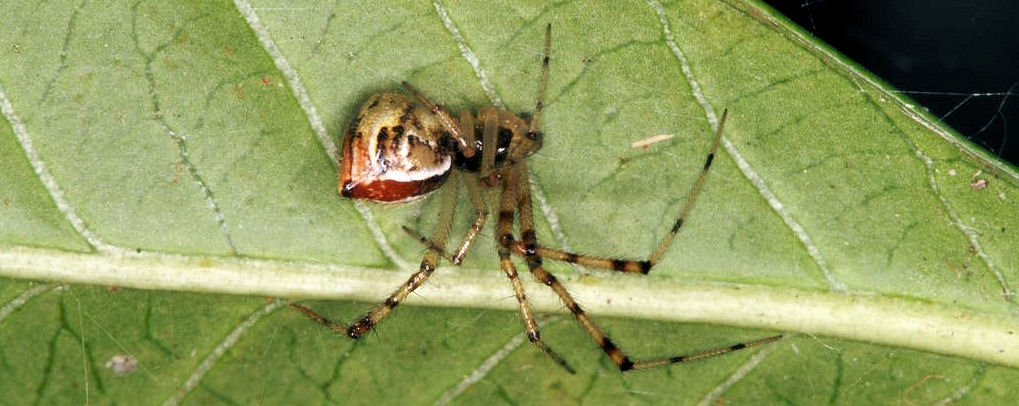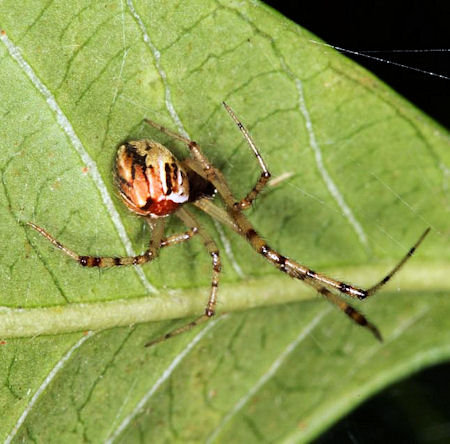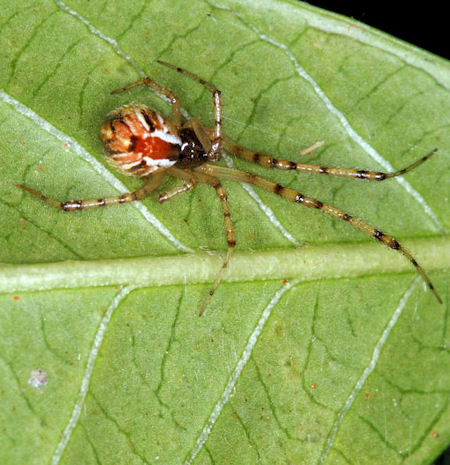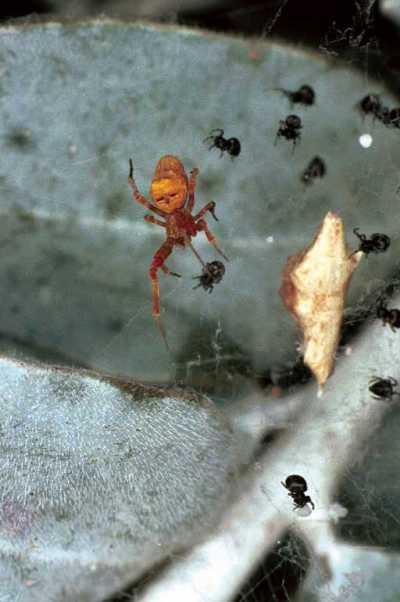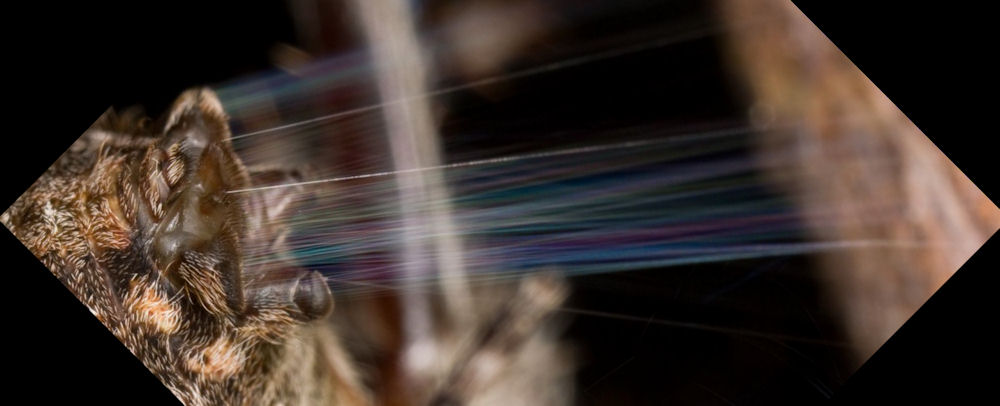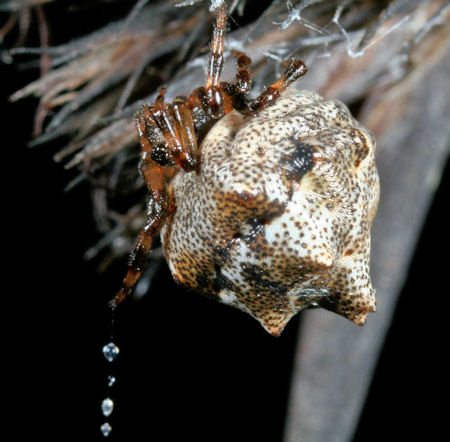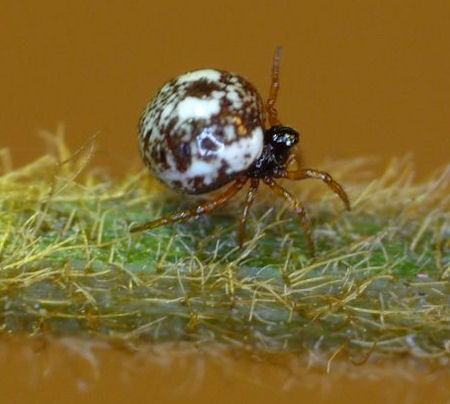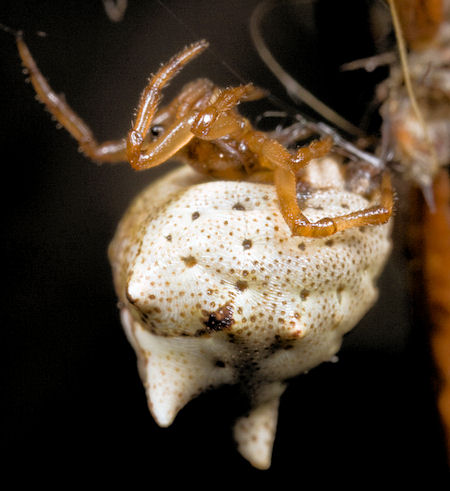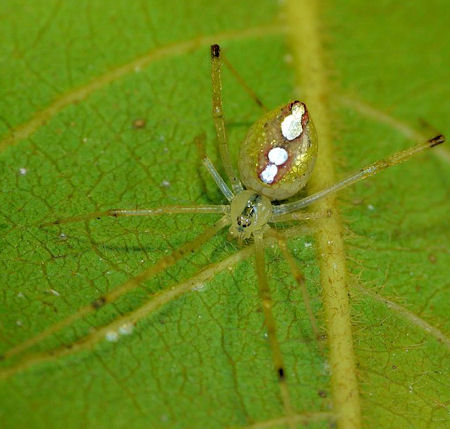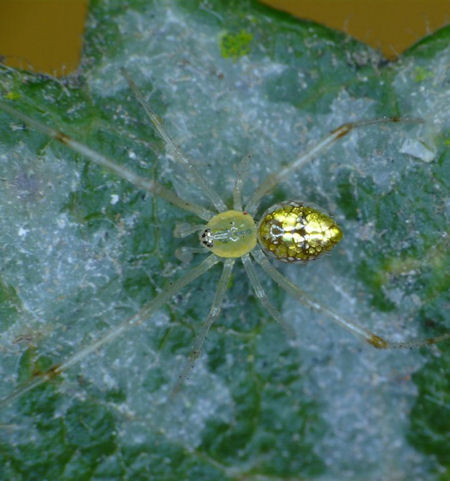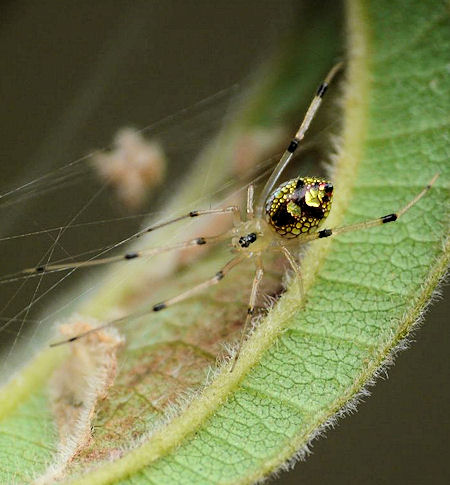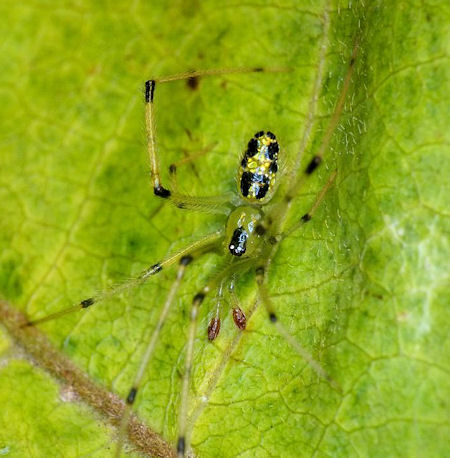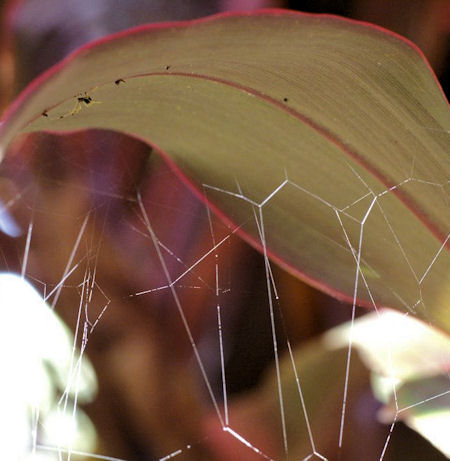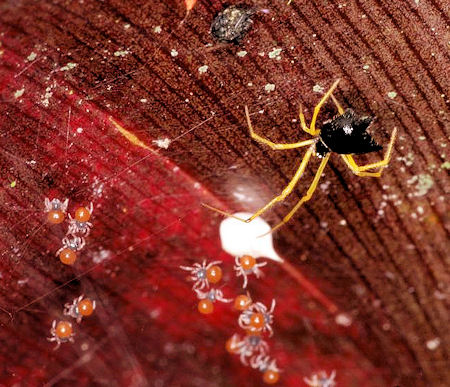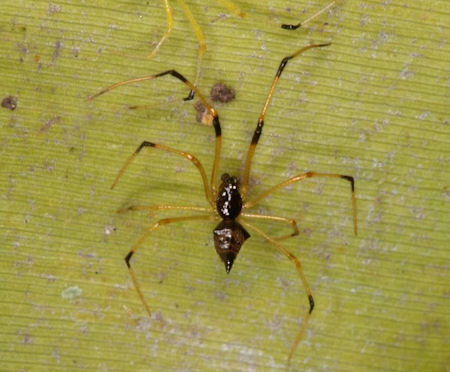
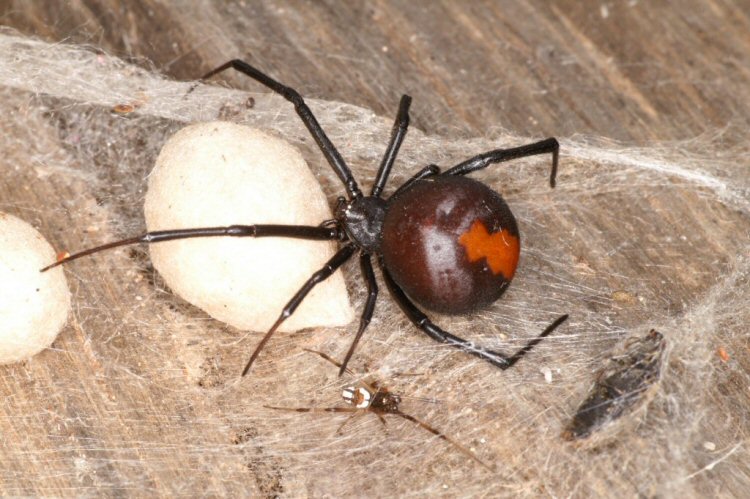
Latrodectus hasselti female guarding her egg-sacs and the very small male below.
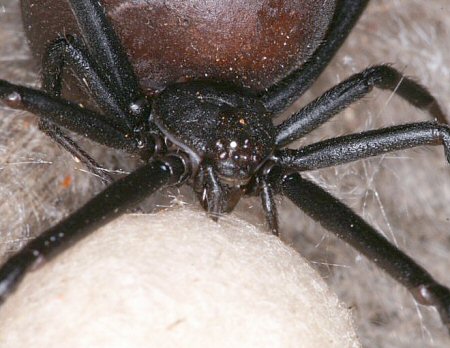
Survey of 2144 cases of red-back spider bites: Australia and New Zealand, 1963--1976.
Sutherland SK, Trinca JC.
An analysis has been made of 2144 consecutive cases of latrodectism (envenomation by the red-back spider, Latrodectus mactans hasselti) reported to the Commonwealth Serum Laboratories. In the last eight years, notifications have averaged 240 cases per annum. Bites, usually on the extremities (74%), occurred most frequently in the summer months, and in the afternoon or evening. Most victims (79%) were aged between 18 and 50 years and 64.4% of them were males. Males are still often bitten on the genitals or buttocks (9.7% of cases). Local pain, redness and swelling were the most common symptoms, although significant pain was felt at other sites in 39% of the cases. The regional lymph nodes often became swollen and tender within 30 minutes. General effects included nausea, vomiting and sweating, but coma and respiratory failure were very uncommon, probably because of use of specific antivenom. This was administered within 24 hours of the bite in 92% of cases, and within two hours in 70%. Although 11 anaphylactic reactions (0.54%) were reported, no deaths resulted either from the venom or from reactions to the antivenom. Few delayed serum reactions (1.7%) were recorded. The action of the venom is described and the management of red-back spider bite is outlined.
Med J Aust. 1978 Dec 30;2(14):620-3.
A black widow's toxin is 15 times more poisonous than that of a rattlesnake, making her one of the few spiders in the world capable of seriously harming humans.
Due to the good hospital services, deaths from a bite are not recorded any more.
Her size is around 10 mm. Only in her final moult she gets her black colour. The male is creamy brown of colour and with a white hour-glass pattern on the underside of his abdomen. He is about 3 mm long.
Latrodectus builds her web in dark places near the ground, preferring the sheltered sides of buildings, abandoned rodent holes, or openings in stone outcroppings. She seldom ventures indoors, but anyone living in black widow territory should be aware that she sometimes makes a home in outbuildings such as woodsheds or outdoor toilets. The web is easily recognized by its tangled appearance, and a series of vertical trap threads extending to the ground. The web silk is extremely strong. Crawling insects getting stuck on the sticky threads are quickly lifted into the web where they're wrapped in layers of silk, injected with venom, and sucked dry. She lays 50 - 200 eggs usually in 4 or 5 egg-sacs. Females mature over a period of 4-8 month and males in a 2-3 month period. The female can live up to three years and males only 6 months. After 14 days the spiderlings emerge from the eggs. This emerging is often correlated on the onset of rain when temperatures are low and humidity high. The spider are cannibalistic and. The spider leaves the web by a process known as "ballooning". A thread line of silk is released until the drag of the air is strong enough to lift the young spider in the air.
There is a dispute whether she is a variant of the almost extinct New-Zealandic Katipo (Latrodectus mactans).
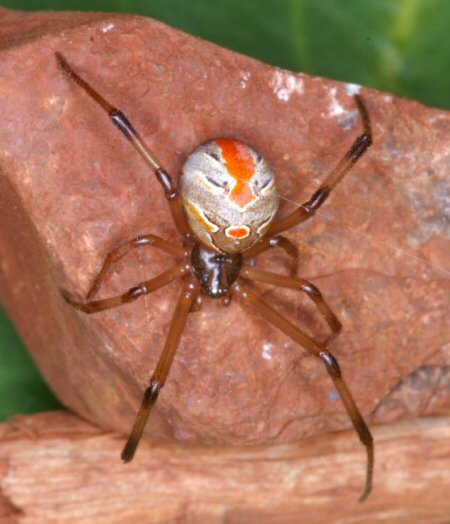
Juvenile (young) Latrodectus hasselti before her last moult where she gets her black suit with red spot(s).
